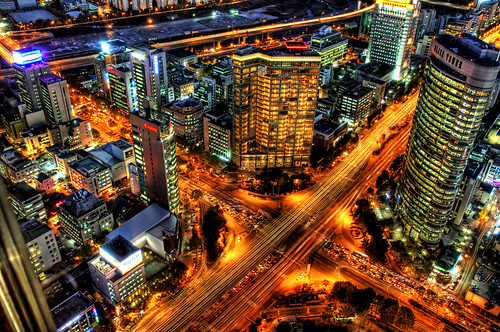
High dynamic range imaging allows an image to display a greater range of luminance between light and dark than a single digital image capture would allow. The most common practice is to take a number of exposures of the same composition, each metered for various light and shadow areas. A simple 3-stop bracket is usually enough. These images are then combined digitally, such as through Photoshop, to produce a final product that emulates how our eyes might have adjusted to different lighting conditions throughout the picture. HDR imagery has varying levels of intensity, but for the most part they look almost too perfect, as if created with computer graphics. This is because while our eyes can adjust more quickly and dynamically than a camera can, they still don't see entire scenes with contrasting lighting in perfect exposure throughout, so a picture that employs this seems too good to be true.
The most popular and effective uses are shots at sunrise, sunset, or in the city at night, where lighting conditions often vary drastically throughout the foreground and background of a composition. A sunset at the beach, for example, could be exposed for both the bright sky and the dark surf. In a lot of cases the practice is similar to dodging and burning, but the effect is much nicer due to the fact that multiple photos are used. My image compilations could be seen as using this method to an extent, as each picture in the collage can be exposed differently.


awesome...phew!!!!
ReplyDeletebeautiful (:
ReplyDelete